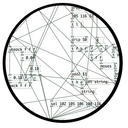-
 alexandros
posted in technical issues • read more
alexandros
posted in technical issues • read moreI'm no filter expert, plus you don't provide your equations, so I can't really tell. I have built though a vanilla abstraction that produces various filter types, including a notch one. You can test it and open it to read the resulting coefficients. It's either [omniFilter_abs~] or [multiFilter_abs~]. You can get it here https://github.com/alexdrymonitis/filter_abstractions
-
 alexandros
posted in technical issues • read more
alexandros
posted in technical issues • read moreI don't think Purr-data's installation will interfere with Pd, so you shouldn't need to uninstall it.
If you have externals, as soon as you open your patch in vanilla, you'll get one error message per object that couldn't be created. -
 alexandros
posted in technical issues • read more
alexandros
posted in technical issues • read more@hansr you're right, that's what my abstraction is (it's actually a combination of two abstractions by Mike Moser-Booth into one, convinient abstraction). I'm no filter specialist, but what I know (which can be wrong) is that cascading filters adds their order, so what you state should be correct.
-
 alexandros
posted in technical issues • read more
alexandros
posted in technical issues • read moreDid you try vanilla? It's very easy to install externals through Tools -> Find externals (or Help -> Find externals on older Pd versions). You can install it with apt-get or compile from source (which is an easy process). It's more likely to work, I guess.
-
 alexandros
posted in technical issues • read more
alexandros
posted in technical issues • read moreCascading filters increases the order. I think [lop~] is first order. I've patched abstractions for various filters that can be controlled by signals here https://github.com/alexdrymonitis/filter_abstractions. These are 2nd order. Cascading two of these should give you a fourth order filter.
-
 alexandros
posted in technical issues • read more
alexandros
posted in technical issues • read moreThese objects are externals that come with Pd-vanilla. What's your OS? I think it's a path issue. Pd doesn't have the path where these are installed in its search paths. On Linux for example, this is /usr/lib/puredata/extra, but this is in Pd's search path by default.
-
 alexandros
posted in technical issues • read more
alexandros
posted in technical issues • read moreAFAIK, Ofelia is no longer maintained. Perhaps a more recent fork of it is ofxOfeliaExtended (https://github.com/Jonathhhan/ofxOfeliaExtended) by @jona if I'm not mistaken.
-
 alexandros
posted in technical issues • read more
alexandros
posted in technical issues • read moreI think I have 0.55.0 or something. Wanna write to Pd's mailing list, or file an issue on GitHub?
-
 alexandros
posted in technical issues • read more
alexandros
posted in technical issues • read moreWhat do you mean by all inputs? Mouse and keyboard? I've never faced this issue, but I usually SSH into the Pi when patching Pd in it. Did you try that?
BTW, compiling is not complicated at all. -
 alexandros
posted in technical issues • read more
alexandros
posted in technical issues • read moreIs it about finding extenral objects? First off, you'll need to install all these externals to the computer you want to load your patch in. If you do that, why not set their paths while downloading them? Or are you copying the externals from your computer to the other one? If that is the case, you could also put all the externals you use in a single directory and then set that in the other computer's Pd paths. It shouldn't be a lot of work.
